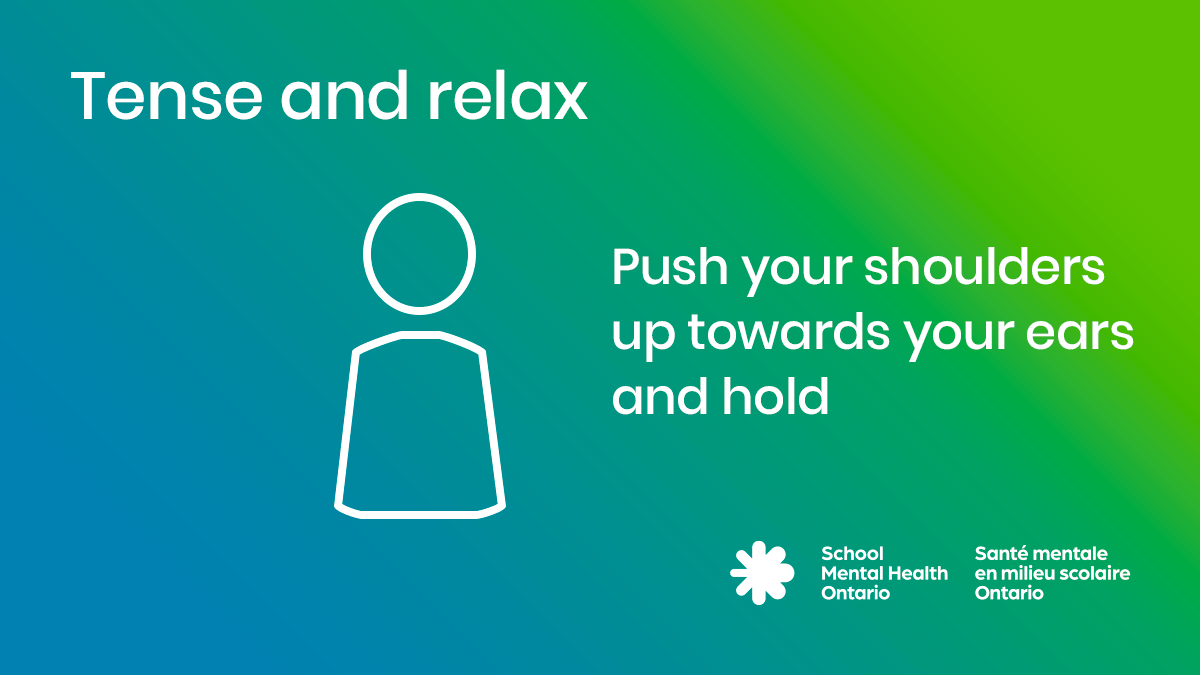


Time
5-10 minutes
Frequency
Multiple times daily
Material
N/A
Purpose
To help students develop the skills to notice how their body feels when they are tense and relaxed and to learn how to relieve tensions and to self-regulate.
- Provide context for the practice (see “Evidence” section).
- Together with students, model these relaxation practices; discuss/reflect about how students feel after the practice.
NOTE: if a student feels pain or discomfort, invite them to sit and pay attention to their breath instead.
| I don’t know |
|
| Squeeze a lemon |
|
| Stone abs |
|
| Push the ground |
|
- Students can select their favourite practice(s) to continue to use on their own.

Tense and relax:
- Push your shoulders up towards your ears and hold
- Now let your shoulders go and relax
- Notice how it feels when your muscles are contracted vs. relaxed
- Let’s try again
See our social-emotional learning poster series for a tense and relax classroom poster.
Understanding the difference in how the body feels under tension and in a relaxation state is a helpful tool to identify and regulate emotions. When students have the opportunity to simulate what it feels like to relieve tension, they can become more mindful of their emotions, and learn to effectively self-regulate (Blair & Diamond, 2008; Klingbeil et al., 2017).
Blair, C., & Diamond, A. (2008). Biological processes in prevention and intervention: The promotion of self-regulation as a means of preventing school failure. Development and Psychopathology, 20(3), 899-911. doi:10.1017/S0954579408000436
Klingbeil, D. A., Renshaw, T. L., Willenbrink, J. B., Copek, R. A., Chan, K. T., Haddock, A., . . . Clifton, J. (2017). Mindfulness-based interventions with youth: A comprehensive meta-analysis of group-design studies. Journal of School Psychology, 63(Complete), 77-103. doi:10.1016/j.jsp.2017.03.006
Understanding why and how we experience various emotions is honouring the connection between mind, body and spirit. As students practise ways to self-regulate, they become more fully alive.
(4h) A self-directed, responsible, lifelong learner who participates in leisure and fitness activities for a balanced and healthy lifestyle.
Or, view all practices and use filters to find what you need
